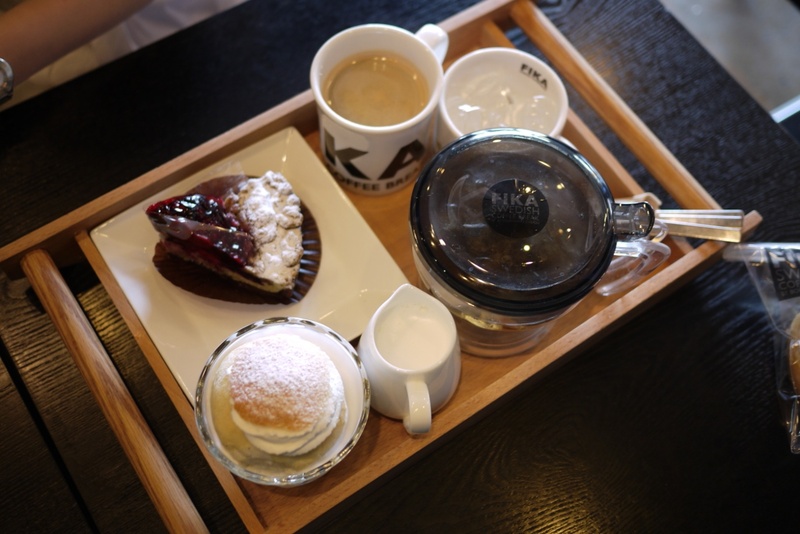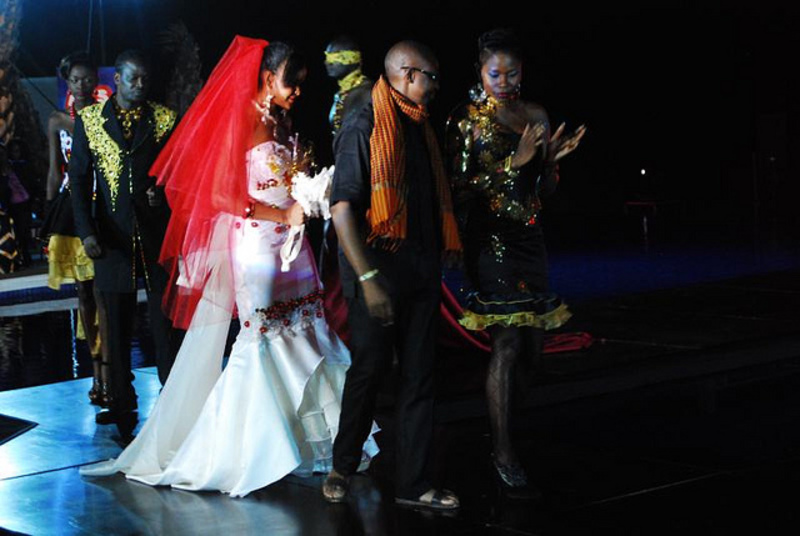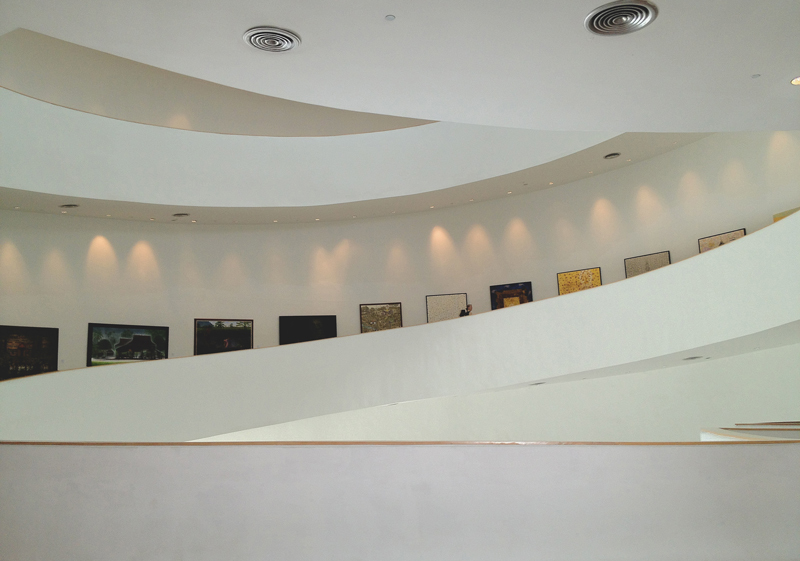
Svensk fika på kafeet FIKA i Seoul. Bild: Min Jung Hong
Månadens Post
The Scandinavian Fever
Publicerat 2012.05.23
As a designer who grew up in Seoul and studied at HDK in Gothenburg, I have always tried to identify and reflect on meaningful phenomena and significant cultural characteristics in both Swedish and Korean societies. Now I can see some interesting changes that could even be considered as a cultural phenomenon in Korea today.
I am one of only a few hundred Koreans who have studied in Sweden. When I decided to study design at HDK in Gothenburg, a lot of people asked me why I would not go to the U.S. or other well-known European countries, but instead choose Sweden. That was only 10 years ago and the Scandinavian countries including Sweden were then still relatively unknown to most Koreans. Of course, a few major Scandinavian brands such as Volvo and Nokia were known already. But to Koreans, Scandinavia or Sweden was known more as a brand name of an advanced social welfare system.
Every imported culture has its own origin, background and route. American culture, for example, was brought into Korea after the Korean War, that of course brought a lot of American soldiers and their culture. The western European contemporary culture was introduced in the 1990s as soon as the overseas trips for Korean people were liberalized in the late 1980s. It was only in 1989 that the Korean people became free to visit foreign countries without special government permission. Needless to say, then the Koreans were rushing to visit different countries of the world and started to bring new images of the western culture back to Korea. And so, the western European contemporary culture became introduced to Korea.
Like these, the new cultural phenomenon which is called The Scandinavian Fever has its own story. One interesting part of that story is that the Scandinavian Fever was not created based on any types of direct cultural contacts or exchanges between Korea and the Scandinavian countries. Although there had been some exchanges at the business side, it used to be very unusual to watch Scandinavian films, buy Scandinavian products, or visit exhibitions of Scandinavian artists in Korea. There was nothing wrong or forbidden about the Scandinavian culture, but there were just not many chances to meet it in Korea.
Then, how did the Koreans get to know the Scandinavian culture all of a sudden? Actually Japan became an interesting bridge between the two cultures. Every year, more than 20 million Japanese and Koreans visit each other. Thanks to the geographical closeness and touristic attractions, cultural exchanges between two countries have vitally increasee in the past decade. And the cultural enthusiasm for Scandinavia in Korea was actually generated by tourists, designers, and design entrepreneurs who saw the love for the Scandinavian culture in Japan in the beginning. It is of course well known that there have been many and longterm cultural exchanges between Japan and the Scandinavian countries such as Denmark and Finland. This relationship has steadily developed for several decades and it seems that the good feeling and curiosity toward each other will never stop.
About 2 years ago, I got to know a woman through one of my close friends. When I first met her, she had been running a small shop in Seoul, Cafe Demitasse. People visited her shop to buy Scandinavian design products and furniture from the 60s and 70s. Interestingly, even though that was her specialty, she had never been to any Scandinavian countries. Instead of spending 10 hours on a flight to Scandinavia, she frequently visited the dealers in Meguro (one of the 23 special wards in Tokyo) of Tokyo. Because she could find almost everything she wanted there in Meguro, she did not need to fly to Copenhagen or Helsinki to select products for Korean customers.
Before she opened the shop she used to be an ordinary tourist who loved Japanese food. On one trip to Japan, she visited Meguro area. She knew that Meguro is famous for shops selling vintage design goods and furniture with more than 50 shops on the main street. There she encountered a shop with completely new designs and objects that she had never seen before. All was so simple, beautiful, and even functional at the same time, she said. She bought some old furniture pieces from Denmark and porcelains from Finland and Sweden there. After coming back to Korea, everybody just fell in love with the items. So she decided to open a small shop, and it became one of the Must-Visit Shops for Scandinavian design lovers in Korea now. This is a good example of how most Korean people encountered the Scandinavian design in the earlier days. They met Scandinavia somehow within the light of the Japanese cultural trends!

Marimekko i Seoul. Bild: Min Jung Hong.
Now people can find most of well-known Scandinavian brands in Seoul. Several design brands such as Book Binders Design or Marimekko became popular among young people, and fashion trendsetters wear Swedish Acne jeans. Stokke and Babybjörn are the names a wise mother should remember for her precious baby. There are even several Scandinavian styled cafés in Seoul, one is called Fika. People eat typical Swedish cinnamon buns and drink bitter Swedish coffee there. Besides, three public and private galleries opened exhibitions on Scandinavian design in this spring only.
When I first saw this new cultural phenomenon in Seoul I thought it was just a vogue which would disappear after some months, because Korean people are known to be picky and unpredictable in the consumer market. Surprisingly none of the other new trends has taken over Scandinavian design’s position in the market yet. And it is becoming considered as a style, not a passing by trend among people.
Interestingly, Scandinavian design products are not considered as an exclusive style for few people who have, so called, ‘good taste’ in design. It is actually loved by the ordinary customers in different age groups. After many years of the design for showing-off, Korean customers start talking about beauty of simpleness and design practicality at last. This change of viewpoint on design I think explains how the Scandinavian products, faithful to their functions, attracted local customers so easily. I heard there are several brands that are about to go along with this atmosphere in Korea. It seems that the market potential has been verified by the tendencies that we witness today. IKEA opens its first store in Korea in 2014. H&M has already opened flagship stores on the main shopping streets of Seoul and they directly became a big issue in the fashion industry of Korea.
Furthermore, this new style affects people’s lifestyles. More and more Koreans are becoming interested in Scandinavian culture in broader perspectives and even society itself. Every year the number of Korean participants in Stockholm Furniture Fair and Copenhagen Design Week has increased, and some Korean design magazines arranges special sessions to introduce these events to their readers. I believe that more vigorous cultural programs on Scandinavia will be planned and introduced in Korea. We will see how this new cultural stream will progress.
Min Jung Hong
An independent furniture designer who explores the area between art and design. Her main interest nowadays is to visualize the meaninig and value of our everyday memories.

